Seoul's Royal Wonders and Sushi Delights
Embark on a free walking tour through Seoul's rich history and vibrant culture, with a tasty sushi break along the way! Explore iconic landmarks and hidden gems.
Time
3 Hours
Stops
9 Places
Distance
?
Gyeongbokgung Palace
Start your tour at Gyeongbokgung Palace, the largest and most iconic of the Five Grand Palaces built by the Joseon Dynasty, offering a glimpse into Korea's royal history.

Gyeongbokgung Palace (Source: Google Maps)
Gyeongbokgung Palace, constructed in 1395, is the largest of Seoul's Five Grand Palaces and a symbol of Korea's royal heritage. It served as the main royal palace during the Joseon Dynasty, showcasing stunning architecture with its grand gates, intricate wooden structures, and beautiful gardens. The palace grounds also house the National Palace Museum of Korea and the National Folk Museum of Korea, providing insights into Korea's history and culture. Visitors can witness the Changing of the Guard ceremony, which adds to the vibrant atmosphere of this historic site. Gyeongbokgung reflects the grandeur of the Joseon Dynasty and remains a must-visit landmark for those exploring Seoul.
National Folk Museum of Korea
Located within the grounds of Gyeongbokgung Palace, this museum provides a deeper understanding of Korean culture and traditions through its extensive collection of artifacts.

National Folk Museum of Korea (Source: Google Maps)
Nestled within the grounds of Gyeongbokgung Palace, the National Folk Museum of Korea offers a comprehensive look into the everyday lives and traditions of the Korean people throughout history. Established in 1924, the museum features a rich collection of artifacts, including traditional clothing, tools, and household items, all arranged thematically to illustrate Korea's cultural evolution. The museum's exhibitions showcase various aspects of Korean life, such as festivals, family rituals, and agricultural practices, providing visitors with a deep understanding of the country's heritage. The outdoor exhibits and beautiful gardens enhance the experience, making it a perfect complement to a visit to the palace.
Bukchon Hanok Village
Wander through the charming streets of Bukchon Hanok Village, home to hundreds of traditional Korean houses, or 'hanoks,' that date back to the Joseon Dynasty.

Bukchon Hanok Village (Source: Google Maps)
Bukchon Hanok Village is a picturesque neighborhood that preserves hundreds of traditional Korean houses, known as 'hanoks,' dating back to the Joseon Dynasty. Located between Gyeongbokgung and Changdeokgung Palaces, this area offers visitors a glimpse into Korea's architectural heritage. The narrow alleys and charming streets are lined with beautifully restored hanoks, many of which now serve as cultural centers, galleries, and tea houses. The village is not only a residential area but also a vibrant community that celebrates traditional Korean culture through various workshops and events. As you wander through Bukchon, you'll experience the harmonious blend of history and modern life in Seoul.
Jogyesa Temple
A short walk from Bukchon, Jogyesa Temple is the chief temple of the Jogye Order of Korean Buddhism and offers a peaceful retreat with its beautiful architecture and serene atmosphere.
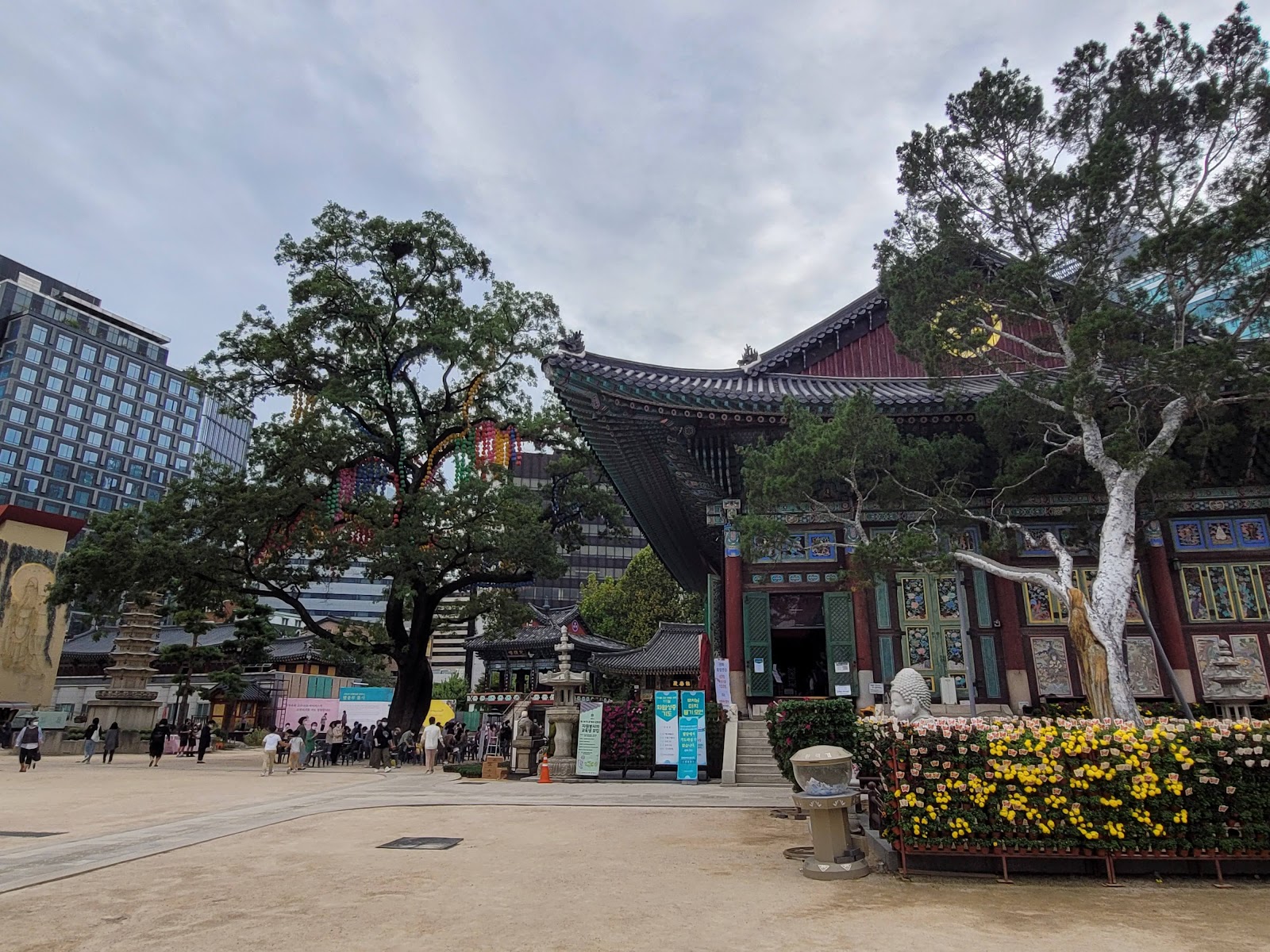
Jogyesa Temple (Source: Google Maps)
Jogyesa Temple, the chief temple of the Jogye Order of Korean Buddhism, is a serene oasis in the heart of Seoul. Established in the late 14th century, the temple is renowned for its beautiful architecture, including intricately painted wooden structures and a stunning main hall adorned with colorful lanterns. Jogyesa serves as a center for Korean Zen Buddhism and is a place of worship and meditation for both locals and visitors. The temple grounds are particularly enchanting during the Lotus Lantern Festival, which celebrates Buddha's birthday with vibrant displays and ceremonies. Visitors can explore the tranquil gardens, participate in meditation sessions, or simply enjoy the peaceful atmosphere away from the city's hustle and bustle.
Sushi Hyo
Enjoy a sushi break at Sushi Hyo, renowned for its fresh ingredients and exquisite presentation, offering a refined dining experience.
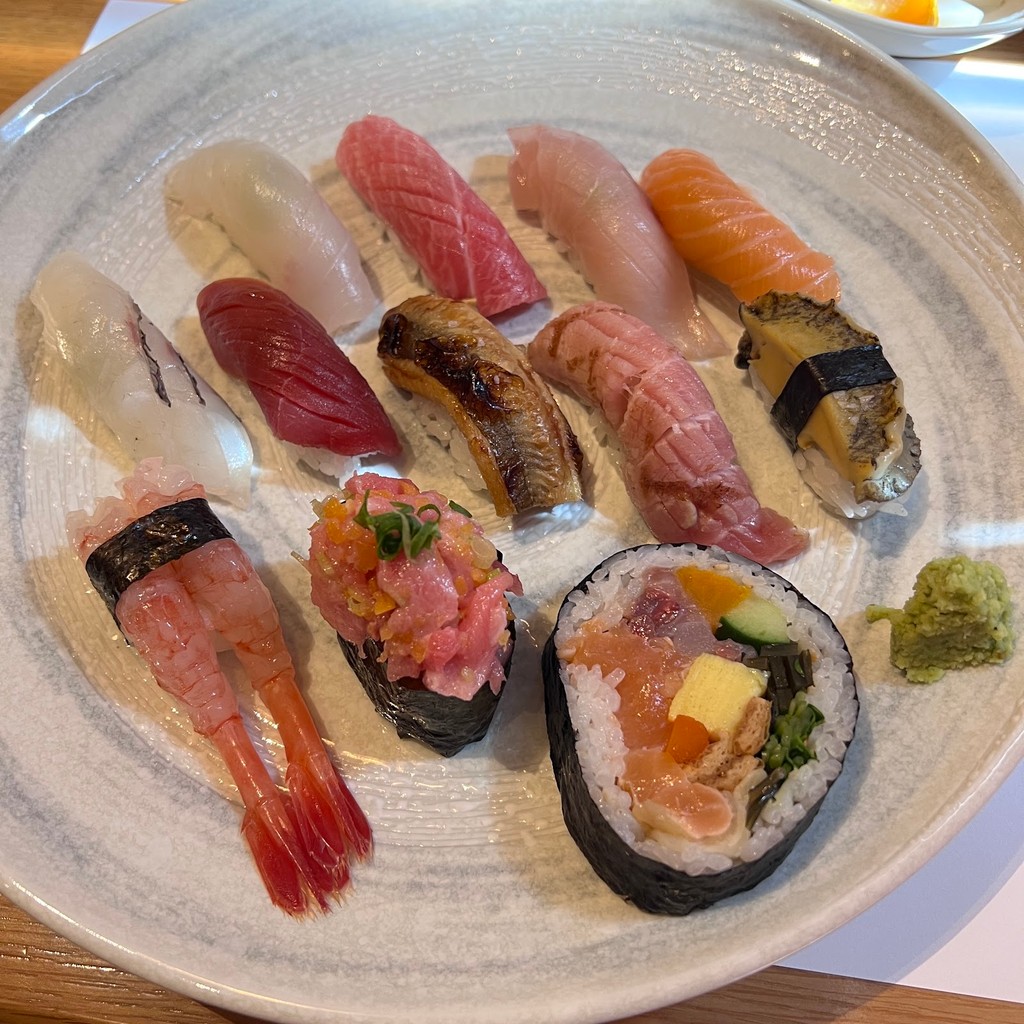
Sushi Hyo (Source: Google Maps)
Insadong Street
Explore Insadong, a lively street known for its traditional Korean crafts, antiques, and teahouses, providing a vibrant cultural experience.
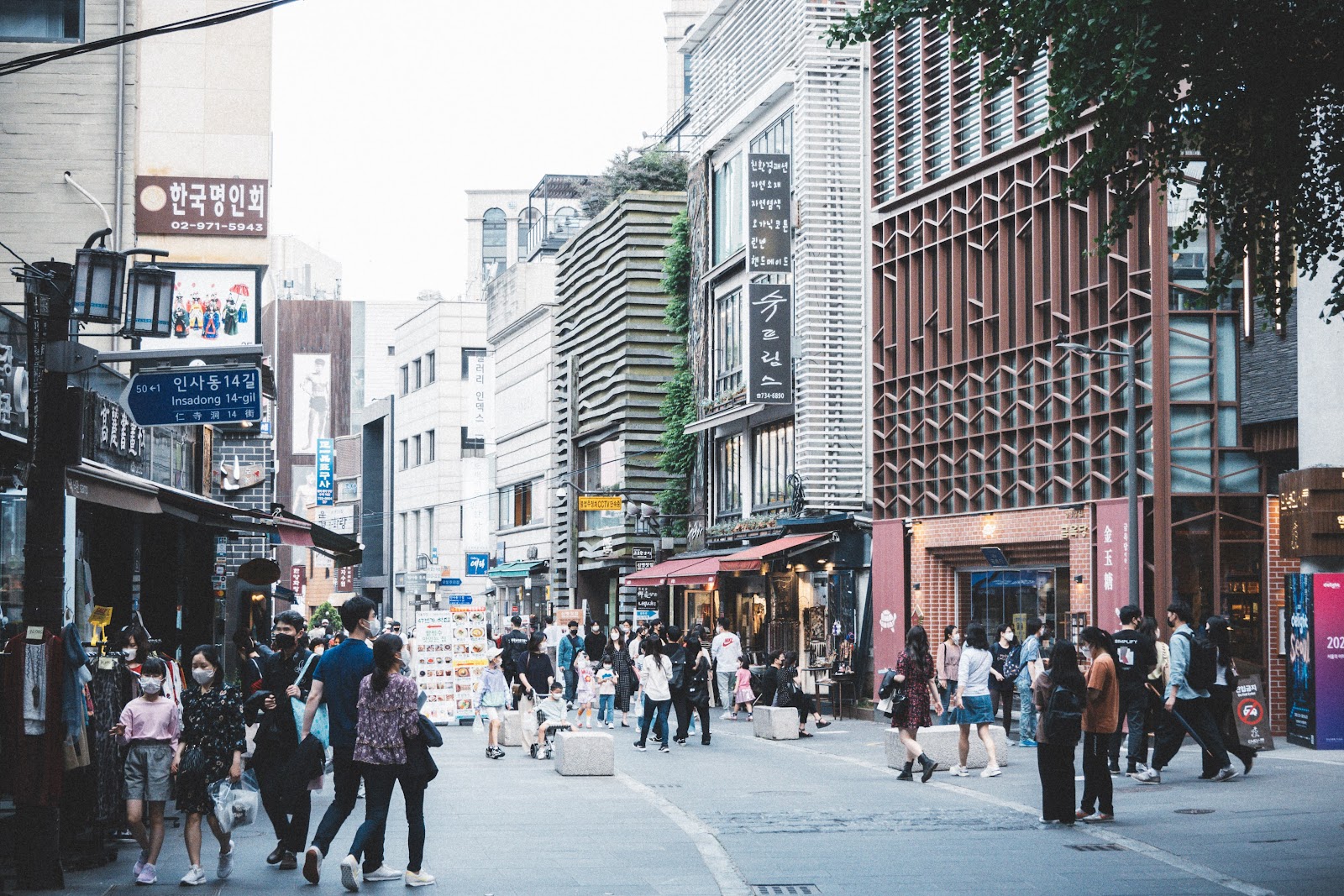
Insadong Street (Source: Google Maps)
Insadong Street is a cultural hub in Seoul, known for its vibrant atmosphere and rich heritage. This lively neighborhood is filled with traditional Korean crafts, antiques, and art galleries, making it a popular destination for both locals and tourists. The area is home to numerous teahouses, where visitors can experience traditional Korean tea ceremonies and sample local delicacies. Insadong also hosts various cultural events and festivals throughout the year, showcasing traditional music, dance, and art. The street's unique blend of old and new reflects Korea's dynamic culture, making it a must-visit spot for anyone looking to immerse themselves in Seoul's artistic scene.
Cheonggyecheon Stream
Stroll along the Cheonggyecheon Stream, an urban renewal project that transformed an old highway into a picturesque public space in the heart of Seoul.

Cheonggyecheon Stream (Source: Google Maps)
Cheonggyecheon Stream is a remarkable urban renewal project that transformed a once-polluted highway into a beautiful, flowing stream in the heart of Seoul. Spanning over 11 kilometers, the stream is flanked by walking paths, lush greenery, and art installations, providing a peaceful retreat for both residents and visitors. The project, completed in 2005, aimed to restore the natural environment and improve the quality of urban life. Cheonggyecheon is now a popular spot for leisurely strolls, picnics, and community events, with various cultural festivals held along its banks throughout the year. The stream not only enhances the city's aesthetic appeal but also serves as a vital ecological corridor in the urban landscape.
Gwangjang Market
Immerse yourself in local flavors at Gwangjang Market, one of Korea's oldest traditional markets, where you can sample a variety of Korean street foods.
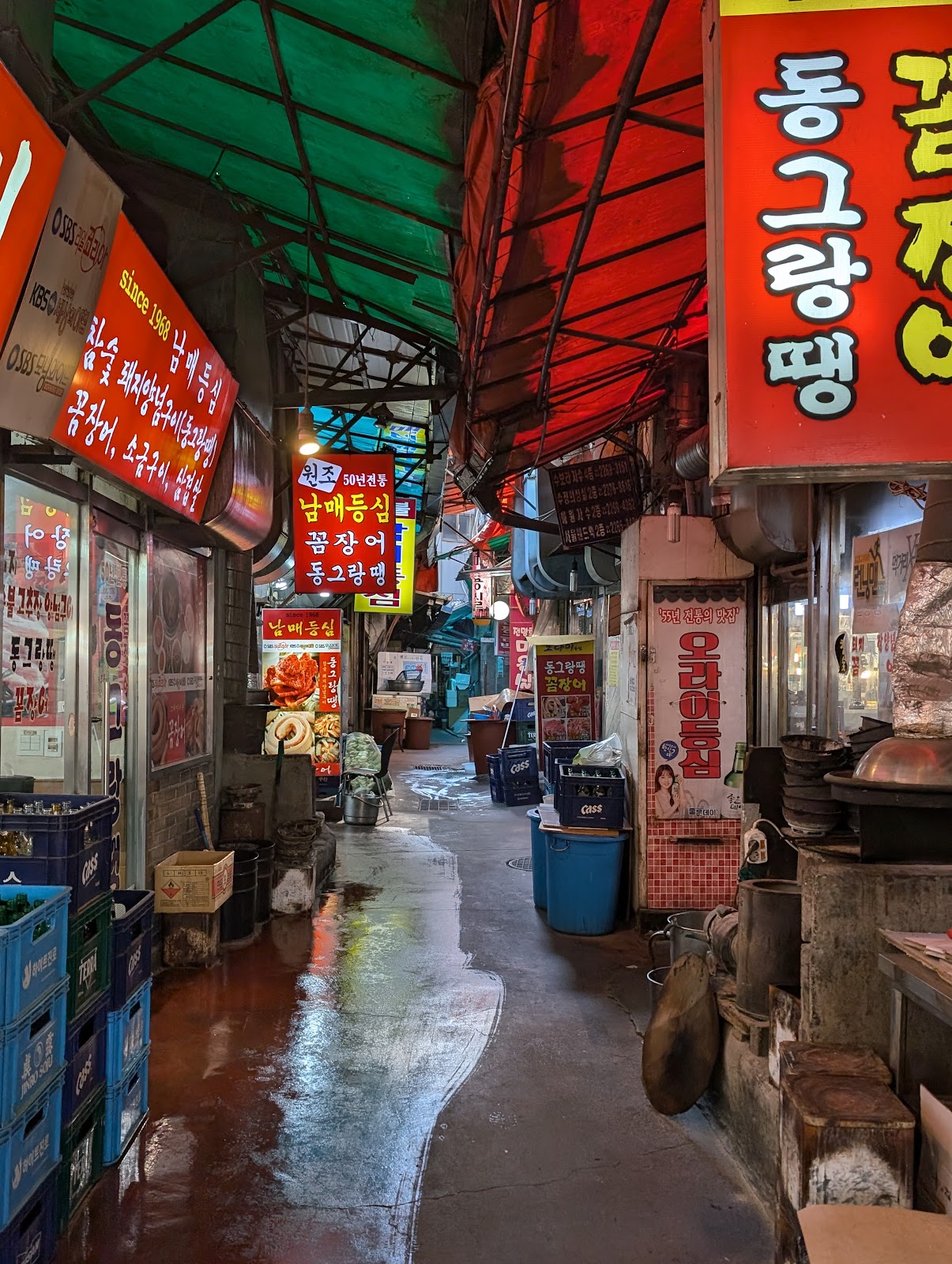
Gwangjang Market (Source: Google Maps)
Gwangjang Market is one of Korea's oldest traditional markets, established in 1905, and is a vibrant hub for local flavors and culinary delights. The market is renowned for its wide variety of street food, including bindaetteok (mung bean pancakes), tteokbokki (spicy rice cakes), and fresh seafood. Visitors can explore the bustling stalls, where vendors enthusiastically prepare and serve delicious dishes right before your eyes. Gwangjang Market also offers a glimpse into Korea's textile industry, with numerous shops selling silk, linen, and handmade goods. The market is a sensory experience, filled with vibrant colors, enticing aromas, and the sounds of bargaining and laughter, making it a must-visit for food lovers and cultural enthusiasts alike.
Dongdaemun Design Plaza (DDP)
Conclude your tour at the futuristic Dongdaemun Design Plaza, a major cultural hub and architectural marvel known for its curvilinear design and vibrant events.
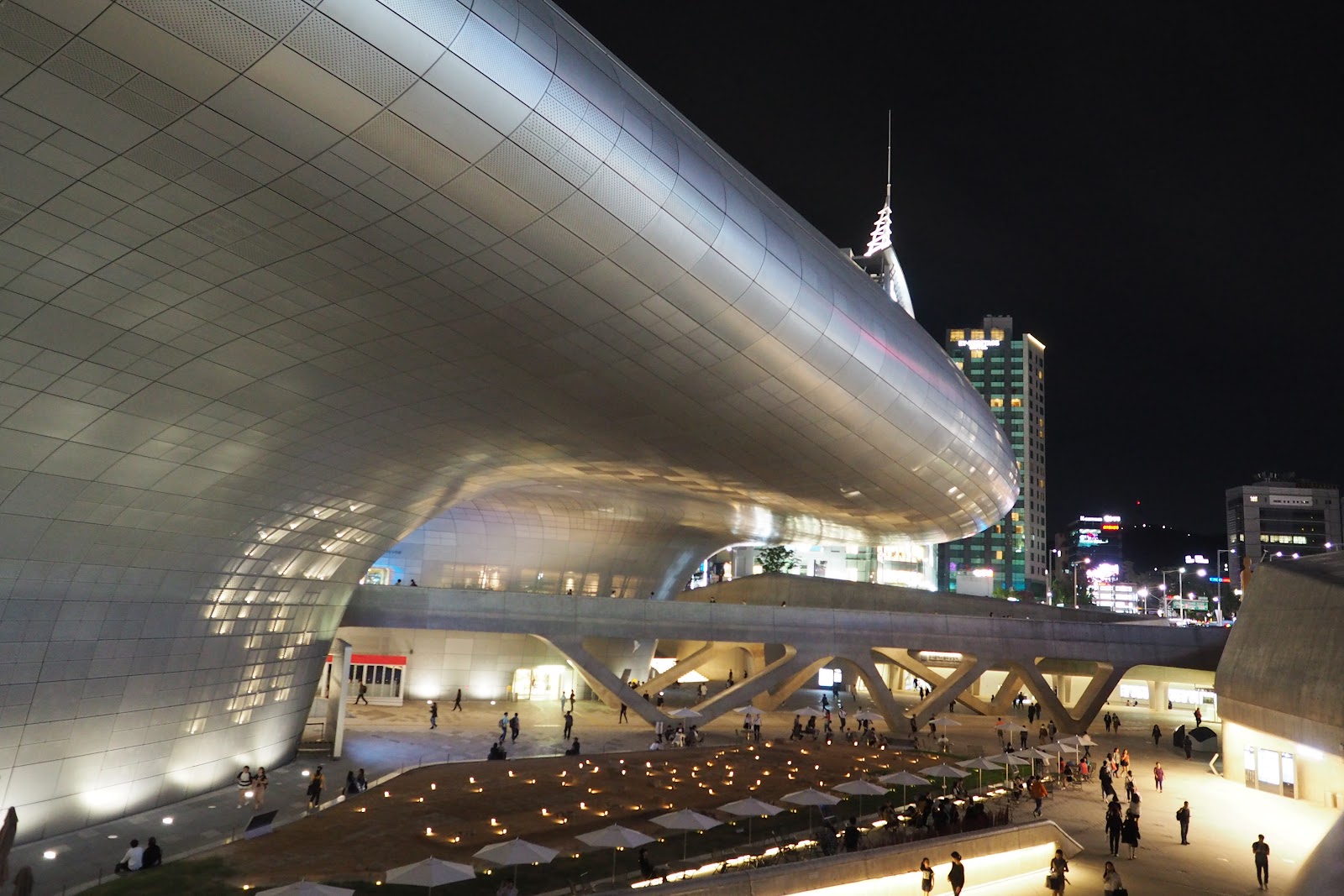
Dongdaemun Design Plaza (DDP) (Source: Google Maps)
Dongdaemun Design Plaza (DDP) is a major cultural landmark in Seoul, celebrated for its futuristic architecture designed by the renowned Zaha Hadid. Opened in 2014, the DDP serves as a hub for design, fashion, and culture, hosting a variety of exhibitions, workshops, and events throughout the year. The building's curvilinear structure and dynamic form have made it an iconic symbol of contemporary Seoul, attracting visitors from around the world. Inside, you'll find exhibition spaces, a design museum, and a rooftop park offering panoramic views of the city. The DDP also plays a vital role in the local fashion scene, with nearby markets and shops showcasing the latest trends and styles. It represents the fusion of traditional and modern elements, making it a fascinating destination for anyone interested in design and innovation.
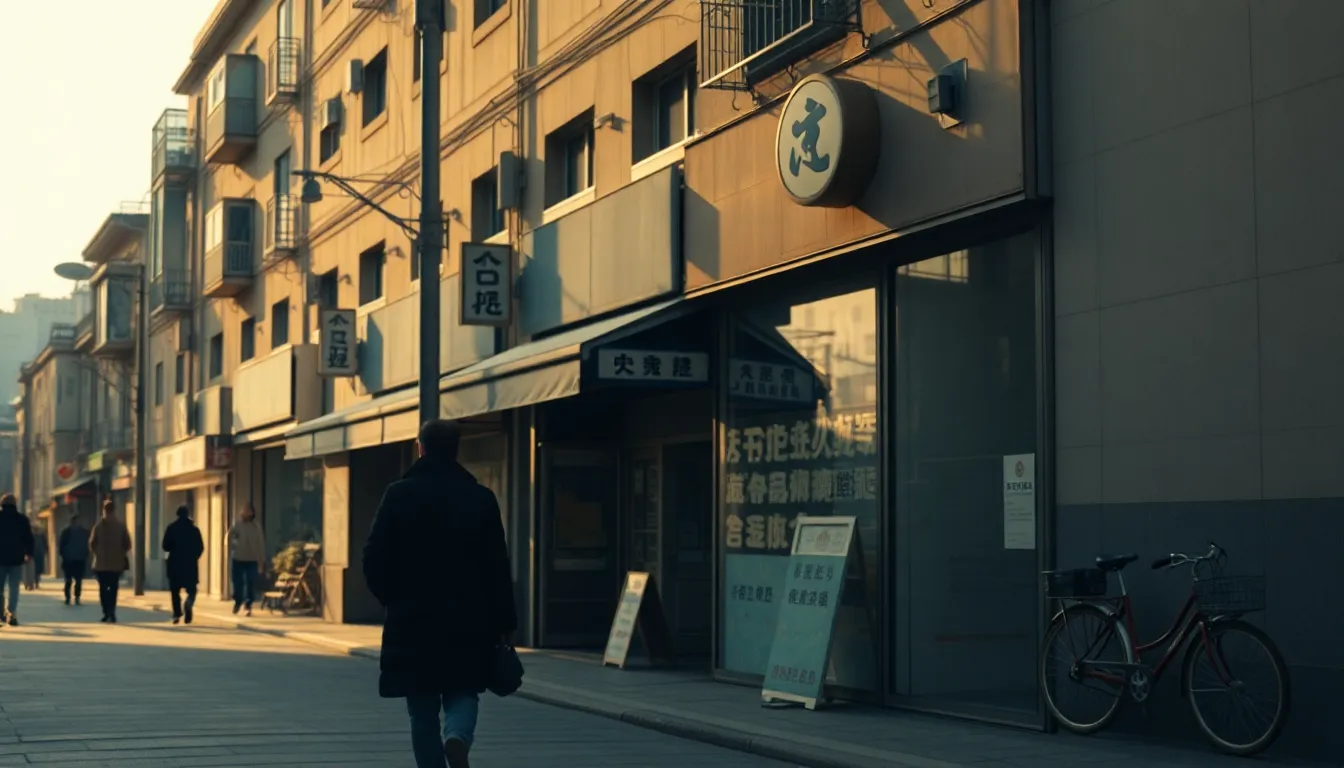
Your travels, your rules.
Create your own Free Walking Tours.
Set your preferences, distances and anything you want to do or see.
Completely free, no payment required.